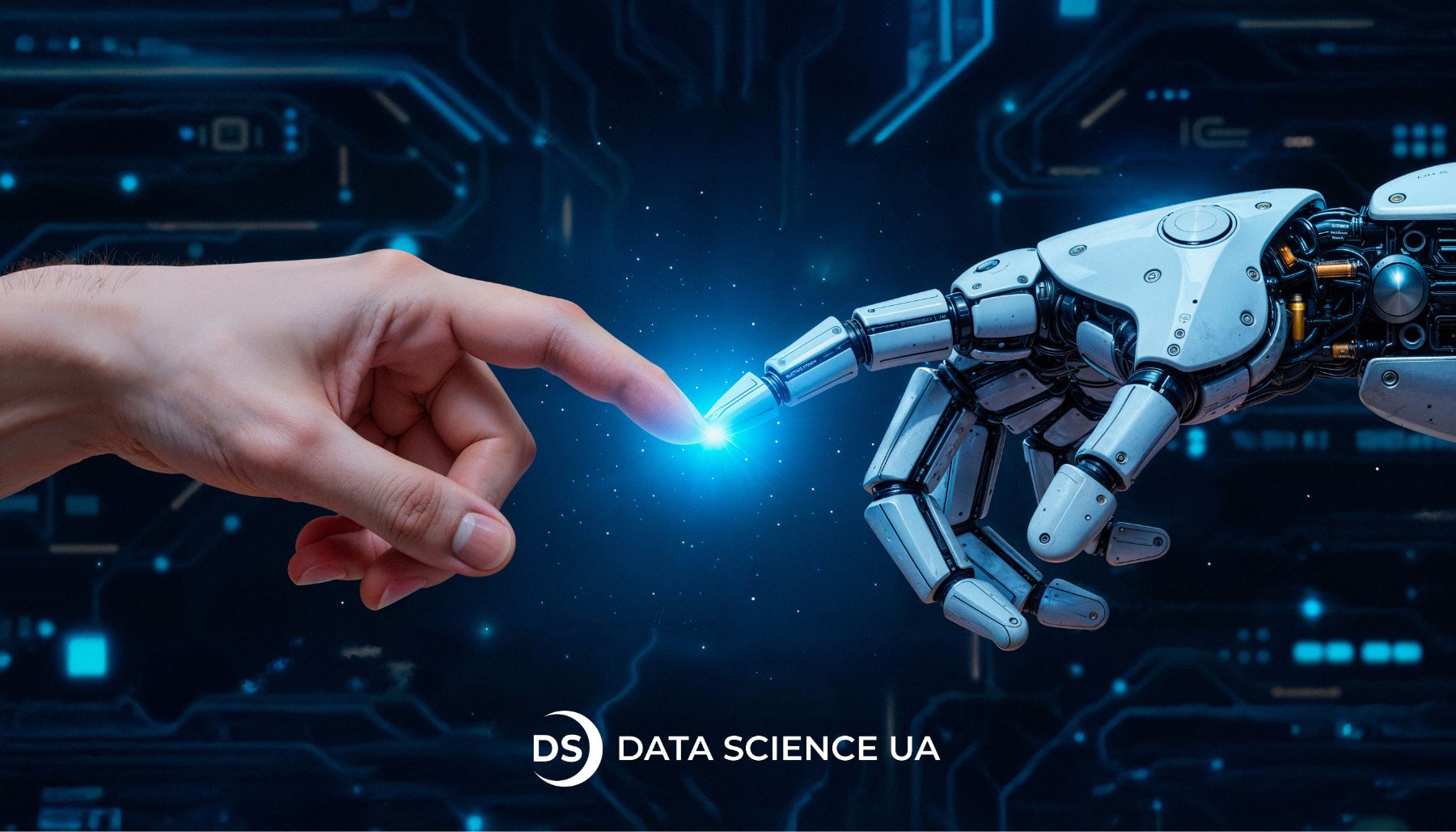Table of Contents:
- Understanding the Role of a Data Scientist
- Problems of Data Science
- Strategies for Addressing Challenges in Data Analysis
- FAQ
Problems in Data Science and Their Solutions
Discover the most common data science challenges and how to overcome them. This blog post offers practical solutions to help you tackle your data problems.
Understanding the Role of a Data Scientist
In the world of data science, facing problems in data science is pretty common. However, by adopting the appropriate approach, these challenges can transform into chances for personal and professional development. Data science is all about finding patterns and insights in data to help businesses make better decisions. With data becoming a key asset, understanding and using it effectively has become crucial for staying competitive.
Businesses are beginning to realize the importance of using data analytics to develop strategy and stay competitive. According to a recent survey by New Vantage Partners, 85% of companies are working hard to use more data. This excitement around data is reflected in the rapid growth of the global data science platform market, which is expected to leap from US$19.75 billion in 2016 to US$128.21 billion by 2022.
However, despite the vast amount of data available, many companies are struggling with big data science problems: how to extract useful insights from all that data. Up to 2.5 trillion bytes of data are generated every day. And 90% of the world’s data has been created in the last few years.
The real dilemma lies not in the lack of data, but in the ability to make sense of it all. In this tsunami of data, it is easy to feel overwhelmed, drowning in a sea of numbers and statistics. But therein lies the opportunity. It is possible to uncover the hidden gems buried in the data and gain insights that can drive innovation, inform decision-making and support growth.
To navigate this data-driven landscape successfully, businesses must adopt a strategic approach to data science. It’s not just about collecting data, it’s about asking the right questions, uncovering meaningful patterns and gaining actionable insights that drive concrete results.
For anyone who wants to succeed in the world of data, it’s really important to learn all about data science. Taking classes on different aspects of data science can open your eyes and give you the tools and knowledge to do well in this constantly changing field. After all, in a world full of information, the people who know how to handle and use it properly will be the ones who make a big difference for a long time.
Problems of Data Science
Jumping into the world of data science can be a bit of a maze, full of data science challenges that demand sharp thinking and innovative strategies to resolve. Let’s explore some typical data science problems that practitioners encounter and share some actionable advice on how to address them:
Identifying Data Issues
Central to the data science challenges faced in any project is the task of navigating through messy, incomplete, or incorrect data. Early detection of these issues is vital, as it can lead to substantial savings in time and effort as the project progresses.
Selecting the Most Appropriate Data Sources
With so many data sources available, from organized databases to scattered text and video, determining which data source to use for analysis is not easy. To make the right choice, you need a solid grasp of the nature of your business and the specific problem you are trying to solve.
Addressing the Skill Gap
The data science world is changing so fast that it’s hard for people to keep up, creating a constant need for learning and improving skills. Encouraging a culture where everyone shares what they know can help close this skills gap and keep data scientists on top of their game.
Data Cleansing Strategies
Data cleansing, or data cleaning, is the cornerstone of reliable data analysis. Techniques such as outlier detection, imputation, and normalization are essential for detecting and correcting errors and inconsistencies in the dataset, ensuring its reliability and accuracy.
Ensuring Access to Relevant Data
Getting the right data is key to any meaningful analysis, but data scientists sometimes struggle to get their hands on data that’s locked away or owned by someone else. Working closely with the people who hold the keys to this data and getting the right permissions is a vital part of making sure you have the data you need to dig into.
Interpreting Complex Datasets
Complex datasets containing high-dimensional or unstructured data pose unique challenges for interpretation. Advanced analytical techniques such as machine learning algorithms and deep learning models can be used to extract meaningful insights from such data sets.
Communicating Results to Non-Technical Stakeholders
It can be difficult to explain technical findings to non-technical audiences in a way that is easy to understand. Good communication skills are essential, as well as the use of pictures and stories to make complex information understandable.
Ensuring Data Security
In data science, keeping data secure is very important, especially when dealing with private or personal information. Using strong encryption methods and complying with data protection laws are really important to keep data safe and secure for everyone.
To solve problems in data science, you need to know how to handle technical stuff, plan ahead, and communicate well. By dealing with these challenges head-on and using practical strategies, data scientists can fully use the power of data-driven decision-making, which brings a lot of value to their organizations.
Strategies for Addressing Challenges in Data Analysis
Navigating the vast ocean of data analysis requires more than just technical skills—it calls for a mix of strategic thinking, innovative solutions, and a human touch. Here are some practical ways to tackle the data science challenges encountered in the ever-changing landscape of data analysis:
Optimizing the Data Analysis Process
Imagine the data analysis process as a well-oiled machine—efficient, reliable, and finely tuned to deliver results. By harnessing advanced tools and technologies, data scientists can automate mundane tasks, freeing up valuable time for deep dives into hypothesis testing and model refinement.
Simplifying Data Access and Integration
Centralizing data access and integration is like weaving together threads from various sources into a cohesive tapestry. Through the use of data warehouses or data lakes, organizations can simplify the process of accessing and analyzing disparate datasets, fostering collaboration and ensuring data consistency across the board.
Talent Acquisition for Data Excellence
Putting together a top-notch data science team is like creating a dream sports team—every member has their own special skills and strengths. By focusing on recruiting and retaining the best talent, companies can attract the best and the brightest by offering high salaries, professional development opportunities and a collaborative work environment that fosters creativity and collaboration.
Implementing Innovative Solutions
Innovation is key to moving forward, and data science is definitely part of this. By using new technologies like artificial intelligence, blockchain, or edge computing, companies can solve complicated problems more efficiently and accurately, keeping them ahead in the fast-changing world of data analysis.
Utilizing Automated Cleansing Tools
Imagine automated data cleaning tools as reliable helpers, diligently sorting through huge amounts of data to remove mistakes and inconsistencies. By using sophisticated algorithms, these tools improve the quality and dependability of data, allowing data scientists to focus on more complex analysis and creating new insights.
Enhancing User-Friendly Visualization
Visualizations turn raw numbers and data into stories that grab people’s attention. By using easy-to-understand visualization tools and methods, everyone can get the picture more clearly, helping team members to pick up insights and make smart decisions with confidence.
Implementing Advanced Encryption Measures
In a time when data leaks and cyber attacks are common, keeping sensitive information safe is super important. Using advanced security methods like homomorphic encryption and differential privacy helps make sure data stays private and secure, strengthening a company’s defense against harmful attacks.
Data Science Expertise in Data Science Development
The rise of data science skills is like a big wave of knowledge, driving innovation and change across all industries. Companies that invest in improving their data science skills will have an advantage in today’s world where data is everything, it is driving growth and forward in exciting new ways.
For those interested in diving deeper into data science and how it can be used to spark innovation and growth, checking out the Data Science Development Service might be helpful.
In summary, by using these methods and bringing human creativity and cleverness into data analysis, companies can really make the most of data and move towards more success and growth.
Closing our discussion, it’s clear that data science comes with its share of challenges. However, with proactive strategies and forward-thinking solutions, these data science problems can be overcome, unlocking the true potential of data-driven decision-making. Addressing data discrepancies, refining analysis techniques, and fostering innovation through talent and technology investments are essential for success in the field of data science. With these foundations in place, organizations can confidently navigate through the complexities of data science, achieving tangible results that fuel growth and innovation.
In summary, the field of data science may seem complex and full of challenges at first glance. But with strategic planning and a dash of creativity, these data science challenges can be overcome, unlocking the full potential of data to drive decision-making. Understanding the important work that data scientists do is the first step towards this goal. By addressing data quality issues and solving data science problems, improving analytical methods, and investing in both skilled staff and the latest technology, companies will be ready to confront the challenges of data science head-on. This will not only instill confidence within the organization but also open up a world of tangible benefits. The twists and turns of the data science journey will ultimately lead to valuable insights that will propel the company forward, making the investment in overcoming the complexities a highly rewarding endeavor.
FAQ
What type of challenges are faced by data scientists and data analysts?
Data scientists and analysts navigate a diverse landscape of challenges, ranging from wrangling messy data to bridging communication gaps. They grapple with issues like ensuring data quality, addressing skill gaps, breaking down communication barriers, and safeguarding data integrity against security threats.
What challenges are associated with feature selection and extraction in the preprocessing stage of data science projects?
Feature selection and extraction involve cherry-picking the most impactful variables from a haystack of data to refine model performance. Data scientists encounter challenges like handling high-dimensional data, managing multicollinearity to avoid skewed results, and ensuring that selected features are interpretable and meaningful for decision-making.
Why is there a lack of skill force in the data science field and how can we overcome it?
The data science field is growing really fast, but it’s leaving behind the old ways of training people. This means there aren’t enough skilled workers to fill the jobs available. To fix this, companies can invest in training programs that fit their needs, work with schools to create new courses, and make sure they’re welcoming to all kinds of people so they can attract more talent.
What methods are commonly used to handle the issue of collinearity among predictor variables in statistical modeling?
Dealing with collinearity, which is a common problem in statistical modeling, needs clever methods. Data scientists often use techniques like Lasso regression, principal component analysis (PCA), and variance inflation factor (VIF) analysis to unravel the complicated connections among predictor variables and make sure the model is accurate.
How can one identify the problem related to the dataset and what is its solution?
Spotting dataset issues is like solving a puzzle, requiring a Sherlock Holmes approach to data exploration. By carefully examining summary statistics, visualizing data, and testing hypotheses, data scientists can uncover anomalies such as missing values, outliers, or biased samples. Armed with these insights, they can apply solutions like data cleaning, feature engineering, and model recalibration to ensure dataset integrity and conduct reliable analysis.











